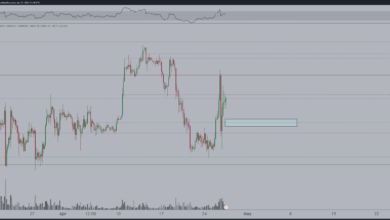
Coindesk Bitcoin Price Live BTC Insights & Trends
CoinDesk Bitcoin Price is essential for investors, traders, and curious watchers alike. As Bitcoin surges to new highs and endures sharp pullbacks, a reliable, real-time reference point becomes a compass in turbulent markets. CoinDesk has long been considered one of the go-to authorities for crypto news, analysis, and especially price data. In this article, we unpack how the Coindesk Bitcoin Price Index works, why it matters, what recent trends are reshaping BTC’s outlook, and how you can use that information to inform trading or investment decisions. We’ll weave in related keywords like “Bitcoin price index,” “BTC live rate,” “crypto analysis,” and “market trends” to provide a comprehensive yet readable guide.
Whether you are a seasoned crypto investor or a newcomer trying to grasp how to interpret live price charts, this deep dive will help you make sense of the Coindesk Bitcoin Price and its significance in the broader crypto universe.
What Is the Coindesk Bitcoin Price Index
The Genesis and Purpose
The Coindesk Bitcoin Price figure you see on CoinDesk stems from the CoinDesk Bitcoin Price Index (XBX), which is a USD-denominated reference rate combining spot price data from multiple exchanges. The idea is to filter out noise, anomalies, or manipulative spikes on any single exchange and produce a fair, weighted average that reflects the market consensus of what Bitcoin is trading for in real time.
When the Bitcoin price fluctuates dramatically on one platform — for example, due to low liquidity or exchange-specific demand — that distortion doesn’t overly influence the Coindesk Bitcoin Price because the index algorithm adapts weights, penalizing exchanges with unusual volatility or low liquidity. CoinDesk publishes the live price, charts, historical performance, and related metrics so users get a robust snapshot of Bitcoin’s market behavior.
How the Index Is Computed
The methodology behind the index is fairly sophisticated, involving several key components:
-
Constituent Exchanges & Liquidity Weighting
The index draws price data from a basket of crypto exchanges. Each exchange’s contribution is weighted by its 24-hour trading volume and liquidity. Exchanges with higher activity and stability gain more influence, while erratic or low-volume ones are downweighted. -
Price Variance Adjustment
If an exchange displays sudden large deviations compared to its peers (for instance, a sudden spike or crash), its weight is temporarily reduced to avoid distortion. -
Real-Time Updates & Safeguards
The index continuously recalculates to reflect real-time changes. That ensures when you query Coindesk Bitcoin Price, you are getting as up-to-date a figure as the system allows, subject to brief latency or smoothing safeguards.
Because of this design, the Coindesk Bitcoin Price is trusted among institutional and retail users alike as a reliable “baseline” for Bitcoin’s spot value in USD.
Why Coindesk Bitcoin Price Matters (vs. Other Sources)

A Benchmark with Credibility
Many crypto platforms publish their own Bitcoin price tickers, such as exchanges, aggregators, or wallet apps. However, these can vary significantly due to regional demand, liquidity imbalances, or even malicious activity. By contrast, the Coindesk Bitcoin Price serves as a reference benchmark that aggregates across markets and filters out noise, making it a more stable and credible signal. Financial news outlets, analysts, regulators, and institutional traders often cite Coindesk’s data precisely because it is considered less prone to extreme distortions than a single exchange’s live rate.
Useful for Analysis, Reporting, Strategy
When writing market reports, building trading algorithms, or publishing comparative studies, using Coindesk’s price makes comparisons consistent — everyone refers to a shared baseline. For example, Bitcoin’s percent movements, volatility metrics, or performance indexes often depend on a stable reference like the Coindesk Bitcoin Price.
Aiding Risk Management & Decision Making
Because the Coindesk Bitcoin Price smoothes out erratic spikes, it helps reduce false signals for traders chasing tiny deviations. You get a more reliable reading of trends, supports, resistance zones, and momentum shifts. In volatile moments, the weighted index is less likely to whip users with errant outliers.
Recent Trends & Insights in Coindesk Bitcoin Price
All-Time Highs & Volatility
Bitcoin recently shattered previous records, with the Coindesk Bitcoin Price reflecting highs above $126,000 before grinding back. While that is staggeringly high, the market has also endured sharp corrections: for example, in early October 2025, Bitcoin plunged more than 10% in a single day, triggering a flash crash and liquidating billions in leveraged positions. These swings underscore how even the aggregated Coindesk Bitcoin Price cannot fully smooth out market extremes, but it helps contextualize them among real-volume trades.
Indicators Supporting Further Run
Several on-chain metrics and long-term indicators suggest room for continued upside. CoinDesk published an analysis showing that as long as the “realized price” stays above the 200-week moving average (200WMA), bullish pressure may continue. One article argues that a sustained move above $116,000 is critical to pushing Bitcoin into full bull mode, potentially targeting $160,000 to $200,000 later in the year. Those are bold projections, but they underline how analysts treat the Coindesk Bitcoin Price not just as a static value, but as a dynamic input into multi-metric valuation models.
Institutional Activity & Demand
Major corporate players continue to deploy capital into Bitcoin. For example, Strategy (formerly MicroStrategy) recently acquired additional BTC at an average price above $123,000 — a move that attracted attention because it was timed right before a steep market drop.
Some analysts see inflows from ETFs, whaling activity, and institutional stacking as a key driver pushing the Coindesk Bitcoin Price upward — undergirding speculative demand with real balance sheet exposure. However, in volatile regimes, markets remain sensitive to macro shocks, regulatory news, and geopolitical tension, which can rapidly pull the price away from theoretical trend forecasts.
How to Interpret & Use Coindesk Bitcoin Price in Strategy
Tracking Momentum & Establishing Context
When you watch the Coindesk Bitcoin Price over time — intraday, 24-hour, weekly, and monthly charts — you can identify momentum shifts. For example, if the index trades consistently above its moving averages (e.g., 50-day, 200-day), that may signal ongoing strength. Conversely, steep dips below supports suggest danger zones. Because the Coindesk Bitcoin Price is smoother than individual exchange quotes, these trend patterns tend to be more reliable and less subject to whiplash.
Supporting Risk Management
Many traders establish alert zones where, if the Coindesk Bitcoin Price breaks below or above certain thresholds, they execute hedges, stop losses, or position adjustments. Because the index averages across exchanges, an extreme outlier won’t prematurely trigger those thresholds. For instance, a trader might set a stop when the Coindesk Bitcoin Price falls below the 200WMA, deeming it a meaningful breakdown, rather than reacting to a single exchange’s dip.
Building Comparative Models
Analysts often layer the Coindesk Bitcoin Price with derivative data: futures premiums, funding rates, open interest, volume trends, or on-chain metrics like realized price, hodler accumulation, and network activity. Because the base price is consistent and trusted, comparisons become more meaningful. For example, if futures markets are trading at a premium relative to the Coindesk Bitcoin Price, that suggests bullish expectations. If funding rates go deeply negative, it may signal grinding lower ahead.
Avoiding Overreliance
While Coindesk Bitcoin Price is a strong anchor, it’s not infallible. Unforeseen macro events, regulatory surprises, or exchange anomalies can override historical patterns. Always cross-check with volume, order book depth, derivatives data, and news sentiment. Treat it as a guidepost — not a crystal ball.
Common Misconceptions & Clarifications
“Coindesk Bitcoin Price” Is Not the Only Price
Some may assume the Coindesk figure is the “true” price, but in reality, it’s an average across sources. On some exchanges — particularly those in niche regions or with localized demand — Bitcoin may trade at a meaningful premium or discount. Always compare across exchanges and cross-reference with local liquidity.
It’s Not Predictive in Isolation
Simply seeing the Coindesk Bitcoin Price cross some level (e.g. $120,000) doesn’t guarantee sustained movement. It needs context: momentum, volume, market breadth, and external catalysts. Analysts often combine price with macro/chain metrics to predict direction. For instance, the article suggests a move above $116,000 would shift the market into full bull mode, depending on supporting on-chain momentum.
Aggregation Doesn’t Equal Perfection
No index is immune to extreme events. If several constituent exchanges suffer outages or manipulation, even a weighted index can be temporarily skewed. It’s also subject to data latency or smoothing constraints.
Not Designed for High-Frequency Trades
Because Coindesk’s index smoothes data, it is not ideal as a trigger for ultra-short-term, millisecond trades. It’s better suited for medium to long horizon analysis, not nanosecond scalping.
Case Study: October 2025 Flash Crash & Rebound

In October 2025, an abrupt escalation in trade tensions between the U.S. and China triggered a flash crash across crypto markets. In one 24-hour span, Bitcoin dropped over 10%, liquidating leveraged positions and triggering extreme volatility. The Coindesk Bitcoin Price reflected this dramatic move, dropping significantly across the index. Because the index is aggregated, it smoothed some variance, but still captured the sharp drop.
The crash’s fallout impacted investor sentiment and compelled many to rethink their position sizing and stop-loss mechanisms. Interestingly, after that steep plunge, Bitcoin rebounded — partially thanks to institutional demand reentering the market and miners rallying.
That episode demonstrates both the strengths and limitations of the Coindesk Bitcoin Price. It flagged the event reliably, yet required contextual signals (volume rebound, derivatives flow, macro news) to interpret whether it was a transient drop or sustained reversal.
Forward Looking: What Could Shape Coindesk Bitcoin Price in the Coming Months
Macro & Regulatory Catalysts
Monetary policy, inflation, interest rates, and fiscal stimulus will play a big role. If central banks lean dovish or weaken rates, capital may flow into traditional and newer high-growth assets — including Bitcoin — lifting the Coindesk Bitcoin Price. Conversely, hawkish policies or tightening financial conditions could exert downward pressure. Regulation remains a key wild card. Changes in U.S. or global crypto policy — especially around ETF approvals, taxation, or exchange oversight — could move markets quickly.
Continued Institutional Interest
Large firms, pension funds, and sovereign wealth funds are gradually inching into crypto. As more balance sheets allocate to Bitcoin, the Coindesk Bitcoin Price may see a stronger upward bias. For example, the article forecasting $200,000 by the end of 2025 cites rising demand and accumulation trends. However, those flows may also generate drawdowns if institutions take profits, creating volatile chop.
On-Chain Signals & Market Sentiment
Chain metrics like realized price, hodler cost basis, exchange outflows, and miner revenue can add predictive power. If aggregated sentiment becomes overbought or funding rates stay extreme, corrections may follow even at high price levels.
Behavioral sentiment indicators — such as Fear & Greed, social volume, or derivatives positioning — often presage short-term reversals. Monitoring divergence between Coindesk Bitcoin Price and those sentiment signals is a useful risk control mechanism.
Technological & Network Developments
Upgrades to Bitcoin’s network (e.g., enhancements in scalability, layer-2 adoption, energy efficiency) or ecosystem growth (new infrastructure, institutional custody) can elevate long-term confidence and demand. That, in turn, supports sustained upward shifts in price benchmarks like Coindesk Bitcoin Price.
Tips for Readers: Use Coindesk Bitcoin Price Wisely
-
Check multiple time frames (1h, 24h, 7d, 1M) to see how Coindesk Bitcoin Price is behaving across horizons.
-
Use moving averages (e.g, 50-day, 200-day) on the Coindesk index to detect trend shifts.
-
Always confirm breakouts or breakdowns with volume, derivatives flow, and macro context.
-
Avoid reacting solely to small fluctuations in the Coindesk index — minor moves are common and may not signal a trend change.
-
Combine the Coindesk Bitcoin Price with on-chain metrics, sentiment, and risk management rules to build a balanced decision approach.
Also Read: What Bitcoin Price Today Live BTC Updates & Analysis
Conclusion
The Coindesk Bitcoin Price is more than a daily quote — it is a vital index that blends data across exchanges to provide a robust, reliable reference for Bitcoin’s USD valuation. Because it accounts for liquidity and variance, it offers a smoother and more trustworthy baseline than any single exchange price.
Throughout 2025, that index has reflected remarkable volatility, recording record highs above $126,000 followed by steep pullbacks. Analysts and traders alike scrutinize where the Coindesk Bitcoin Price may head next, applying trend analysis, on-chain metrics, institutional flows, and macro signals to interpret the direction.
While no tool is perfect, using the Coindesk Bitcoin Price as a central anchor in your crypto analysis gives a strong foundation upon which to layer insights, risk controls, and strategic decisions. As markets evolve, staying grounded in a trusted benchmark helps you separate noise from actionable trends.
FAQs
Q: How often does the Coindesk Bitcoin Price update?
The Coindesk Bitcoin Price (derived from the XBX index) updates in near real time. It recalculates continuously, integrating fresh data from constituent exchanges while applying smoothing and variance adjustment.
Q: Can the Coindesk Bitcoin Price differ significantly from exchange prices?
Yes. Because it is an aggregate, it may differ from any one exchange’s live quote, particularly in times of low liquidity or local premium/discounts. However, it tends to moderate extreme deviations and present a more consistent picture across exchanges.
Q: Is it safe to base trading signals solely on CoinDesk Bitcoin Price?
No. While it’s a valuable reference, you should always corroborate with volume, derivatives data, sentiment, and macro indicators. Overreliance on price alone can lead to whipsaws in volatile markets.
Q: Why do analysts refer to $116,000 as a pivotal level for Bitcoin?
Some analysts believe breaking and holding above $116,000 (on the Coindesk index) would mark a transition into sustained bull momentum, supported by on-chain metrics and accumulation behavior.
Q: Will the Coindesk Bitcoin Price method change over time?
Potentially. As markets evolve, CoinDesk can adjust exchange weighting, inclusion logic, or variance handling to maintain accuracy. But the core goal will remain: present a fair, robust, and representative Bitcoin benchmark.






